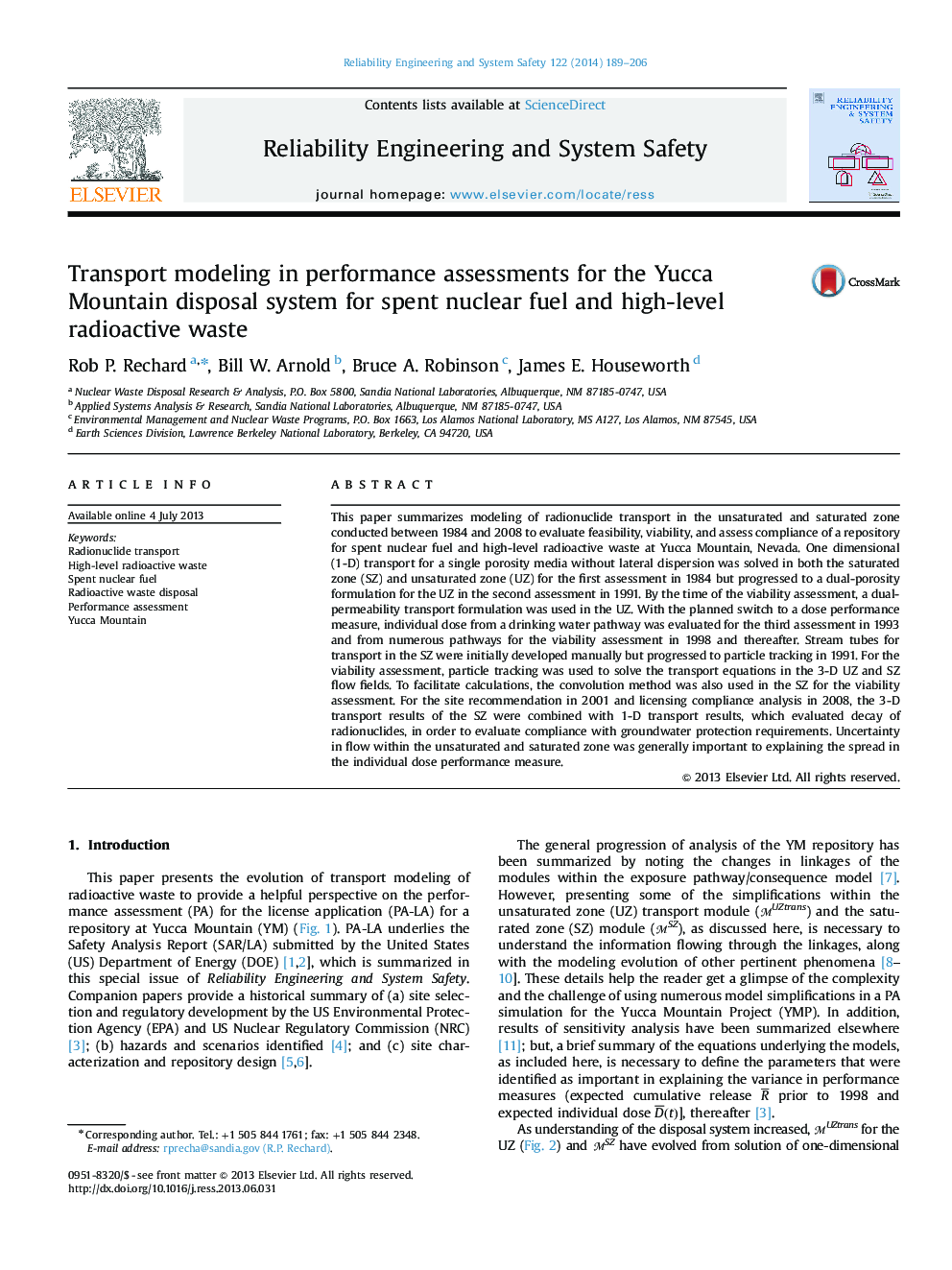| کد مقاله | کد نشریه | سال انتشار | مقاله انگلیسی | نسخه تمام متن |
|---|---|---|---|---|
| 805602 | 1468248 | 2014 | 18 صفحه PDF | دانلود رایگان |
• progression from single-porosity, to dual-porosity, and then to dual-permeability transport models for the unsaturated zone is described.
• progression from single-porosity to dual-porosity transport models in combination with convolution method is described for the saturated zone.
• progression from one-, to two-, and then to three-dimensional flow models for the saturated zone is also described.
• progression of models for evaluating doses in the biosphere is described after a dose radiation protection standard was selected.
This paper summarizes modeling of radionuclide transport in the unsaturated and saturated zone conducted between 1984 and 2008 to evaluate feasibility, viability, and assess compliance of a repository for spent nuclear fuel and high-level radioactive waste at Yucca Mountain, Nevada. One dimensional (1-D) transport for a single porosity media without lateral dispersion was solved in both the saturated zone (SZ) and unsaturated zone (UZ) for the first assessment in 1984 but progressed to a dual-porosity formulation for the UZ in the second assessment in 1991. By the time of the viability assessment, a dual-permeability transport formulation was used in the UZ. With the planned switch to a dose performance measure, individual dose from a drinking water pathway was evaluated for the third assessment in 1993 and from numerous pathways for the viability assessment in 1998 and thereafter. Stream tubes for transport in the SZ were initially developed manually but progressed to particle tracking in 1991. For the viability assessment, particle tracking was used to solve the transport equations in the 3-D UZ and SZ flow fields. To facilitate calculations, the convolution method was also used in the SZ for the viability assessment. For the site recommendation in 2001 and licensing compliance analysis in 2008, the 3-D transport results of the SZ were combined with 1-D transport results, which evaluated decay of radionuclides, in order to evaluate compliance with groundwater protection requirements. Uncertainty in flow within the unsaturated and saturated zone was generally important to explaining the spread in the individual dose performance measure.
Journal: Reliability Engineering & System Safety - Volume 122, February 2014, Pages 189–206
